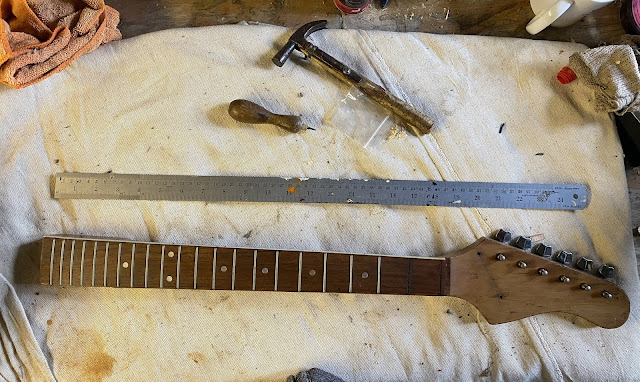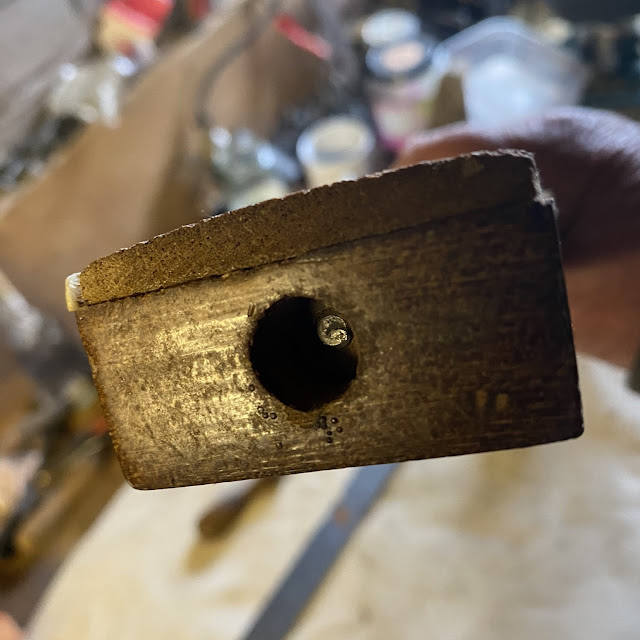Restoring a 1970s Guitar Neck - Part 1
Overview of the Jedson Guitar Neck
Jedson electric guitars were a brand of guitars that were made in Japan in the late 1960s and early 1970s. They were distributed by Dallas Arbiter, a British company that also owned Vox and Fender UK. Jedson guitars were mostly copies of popular models such as Telecaster, Les Paul, SG, and Stratocaster, they also produced and designed their own lap steel guitars and hollow body guitars.
The guitar neck below was from a guitar that had a tremolo fitted as standard and was purchased originally from Bell's Guitar Catalogue in the early 1970s. This catalogue was a collection of brochures and leaflets that showcased various guitars and other musical instruments sold by Bell's Music, a British company that operated from the 1950s to the 1980s. Bell's Music was well known for importing and distributing various European, American, Japanese etc.guitars and basses.
Jedson guitars are
considered to be rare and collectible today, as they were only
produced for a short period of time and in limited numbers. Some
musicians who have used them include Pete Townshend, David
Gilmour and John Lennon.
Removing the Fingerboard and replacing the Truss Rod of a Jedson Guitar
A truss rod is a steel rod that runs inside the neck of a guitar, and is used to stabilise the neck, counteracting the tension of the strings. A truss rod can be adjusted to change the curvature of the neck, which affects the playability, intonation, and action of the guitar.
This Jedson guitar neck on the workbench is the only part left of the very first guitar I owned so this is a very sentimental restoration journey.
Sometimes a truss rod can break, get stuck, or reach its limit and it may need to be replaced. Replacing a truss rod is not an easy task, and it requires some skill and a lot of bravery. If you are not confident in your abilities, you may want to consult a professional luthier or guitar builder.
In this case the adjuster at the heel had sheared off due to over tightening and metal fatigue. The neck was also twisted so this would need to be corrected later on in the process.


Comments
Post a Comment